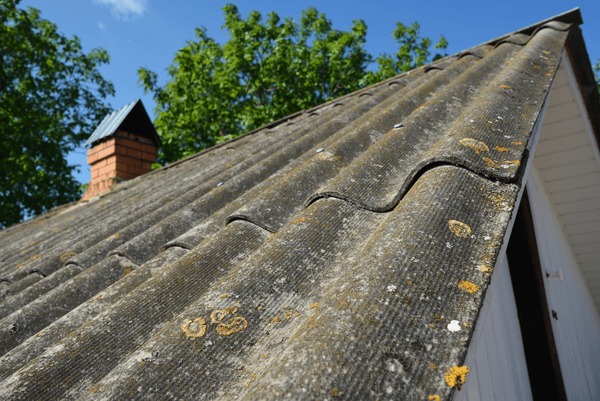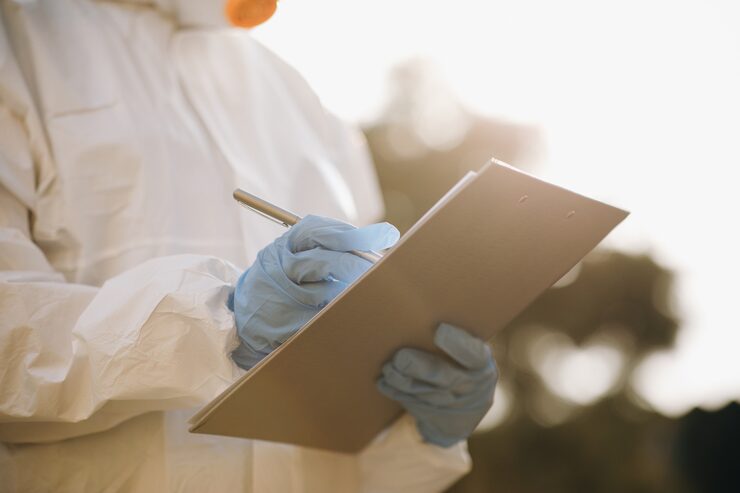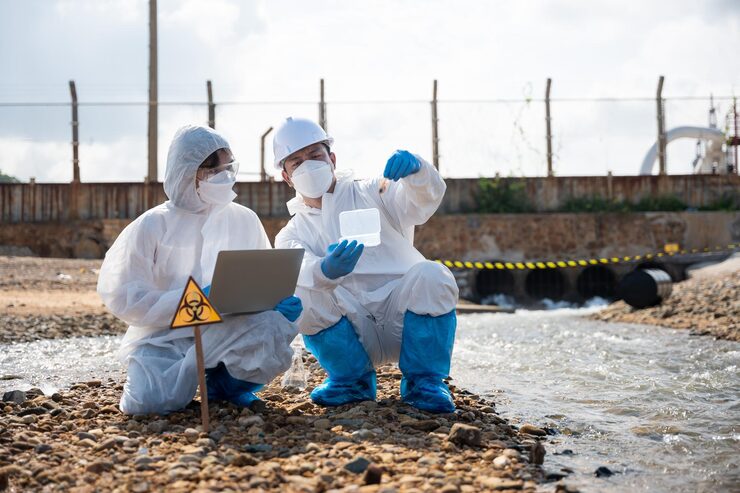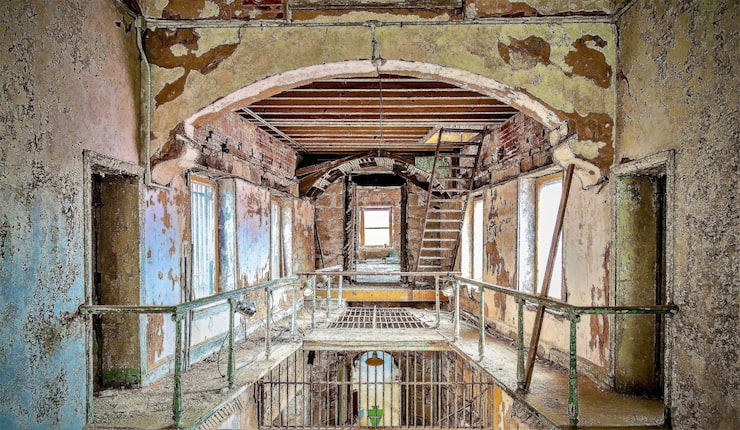The durability of asbestos roofs is due to the use of cement sheeting, made of asbestos fibres. It not only makes them long-lasting in different natural conditions, but also protects homes from fire. Research shows that during the mid-1980s, Australia was one of the key users of asbestos/capita, as it was versatile, cheap, and easier to carry due to its light weight. From the 1940s to the 1980s, the use of asbestos in the roofs of Australian houses was widely observed because of its ability to resist fire and higher durability compared to alternatives.
However, the continuous use of asbestos threatened the social and physical well-being of Australians on a significant scale. The asbestos fibres posed significant health risks such as lung cancer, asbestosis, and mesothelioma.
Understanding The Popularity of Asbestos Roofs
First, let’s know about the materials of asbestos roofs and why Australians prefer asbestos roofs.
What Are Asbestos Roofs Made of?
An asbestos roof primarily consists of asbestos-cement, containing asbestos fibres and cement, which are developed into rigid and thin sheets or shingles. White asbestos or chrysotile ensures durability and strength, while the cement acts as the binder.
Why Were Asbestos Roofs Popular Among Australians?
In the post-Second World War era, asbestos emerged as a “miracle substance” in Australia, as its fire resistance, durability, and waterproofing advantages were beneficial for a long period. Moreover, asbestos roofs were cost-effective as well, which eventually made them a cheap and ideal construction material between the 1940s and 1980s.
Health Hazards of Asbestos Exposure
The health risks generated by asbestos in the roof are no longer minor or less concerning to ignore. The asbestos roof insulation causes some lethal diseases in children and adults.
How Are Asbestos Fibres Released?
Asbestos fibres are mostly released due to natural disasters and weathering. Over time, the cement matrix of an asbestos roof degrades due to water, acid rain, and wind, and due to this, chrysotiles become airborne. Apart from this, cracks or breakage of roofs or drilling and renovations release fibres.
Common Health Risks
| Diseases | Symptoms | Vulnerable Age Groups and Demographics | Exposure Level |
|---|---|---|---|
| Asbestosis | Chest and shoulder pain, swollen fingertips, fatigue | Older adults, 70-80 years old; People working in the manufacturing, construction, and mining industries. | |
| Mesothelioma | Tiredness and fatigue, rapid loss of weight, issues regarding difficulty swallowing | Elderly (60-70 years) adults; Young (50 years) adults. | |
| Lung cancer | Breathing difficulties, chest pain, persistent cough | Older adults, 65 or above; Families living under asbestos roofs. | |
| Chronic respiratory conditions | Crackling sound in lungs, shortage of breathing, clubbing in toes and fingertips | Elderly (60-70 years old) adults and children. |
Table 1: Common Health Concerns: Symptoms, Vulnerable Demographics and Age Groups, and Exposure Level
| Exposure Level | Indication |
|---|---|
| High | |
| Medium | |
| Low |
Risks Beyond Health: Issues Regarding Properties
The risks regarding asbestos go beyond health factors, as they create threats to the quality of property.
Difficulty in Repair & High Cost
Apart from natural threats and disasters, several biological agents, such as algae and lichens, affect the quality of asbestos roofs. Due to this, in several cases, the roofs go beyond repair, while the cost of replacement and abatement is also high.
Insurance Implications
Mostly, the reasons behind asbestos roof tile damage determine the insurance coverage, while the standard insurance policies exclude the roof dismantling costs, unless the roofs are damaged due to fire or storms. Also, the higher premium costs are challenging for low or middle-income families.
|
Factors |
Asbestos Roof | Normal Roof |
|---|---|---|
| Health Risks | As buyers are open to the risks, such as asbestosis and cancer, in several cases, it affects property values. | Poor drainage systems and leaks in normal roofs cause the growth of molds, releasing spores that lead to several respiratory issues. However, due to advanced systems and tough roofs, the property values are comparatively higher. |
| Costs | Abating asbestos roofs is expensive in nature, and in this regard, buyers tend to pay low costs to keep their purchasing under budget. | The roof demolition and repair cost are comparatively higher for normal roof homes, but in several cases, they can be replaced and repaired within a minimum budget (depending on the types and level of damage). |
| Market Hesitation | As buyers are aware of the drawbacks of asbestos, it becomes difficult to sell property. Eventually, it leads to a major drop in price, causing financial losses. | For normal roof homes, the concerns are generally regarding the external environment and basic facilities, which determine the property values. |
| Insurance & Loans | The insurance regarding asbestos demands a higher price and mortgages. | For normal roof homes, the insurance premium cost is comparatively low, proven to be cost-effective for property buyers. |
| Disclosure Requirements | Sellers are legally bound to disclose if there’s any presence of asbestos, empowering client trust, as well as potential challenges. | Normal house roofs mostly do not include asbestos or any equivalent in their roof, which is a key factor in purchasing properties. |
Table 2: A Comparative Analysis Based on Several Factors Influencing Property Values for Asbestos and Normal
Legal Framework Surrounding Asbestos Roofs
Here, let us look at the Australian laws and regulations on asbestos roof tiles.
National Regulations
Work Health and Safety Laws
- PCBUs are strongly responsible for securing the safety and health of workers.
- Particular obligations linked to the safety and health of relevant professional individuals.
Self Work Australia Guidelines
- Need to be a registered Australian citizen.
- Minimum age: 15 years
- Not working for over 25 hrs./week.
State and Territory Rules
| Factors | New South Wales | Victoria | Queensland |
|---|---|---|---|
| Licensing | Must have approval for abating non-friable asbestos. | The license is not a mandatory requirement, but if asbestos remediation poses any certain risks. | Must hold an A or B license if you want to abate non-friable asbestos. |
| Notification | These two authorities must have prior notice: NSW Department of Customer Service and WorkSafe Victoria. | If asbestos projects take place at your own place, you do not need to notify. | WorkSafe Queensland must be notified before you begin. |
| Work Procedures | Site preparation and safe working methods are specific to abate the asbestos roof and install a new one | Follow the guidelines of WorkSafe Victoria. | Follow the specific guidelines for the license and asbestos remediation, given by WorkSafe Queensland. |
Table 3: State and Territory Rules in Different Areas in Australia
Penalties & Legal Consequences
A significant amount of fines is strictly imposed if you remediate asbestos without any safety measures or controls. For example, in 2022, an unauthorised person had to pay $3,000 under the rules of WHS as he used wrecking bars and got charged under illegal disposal while remediating asbestos in Brisbane.
Homeowners also face multiple types of fines for several illegal activities, such as high-pressure blasters, which charge additional costs, followed by legal actions.
Homeowner Responsibilities
- Homeowners in Australia come under WHS laws only when they recruit employees for property building and repair, and the owners become the principal conductor. Their fundamental job is to ensure a safe working environment and a safe working system, including required facilities, training, and supervision.
- Under the WHS laws, homeowners are responsible for identifying multiple hazards, such as airborne particles and asbestos. Apart from this, they are responsible for providing Personal Protective Equipment (PPE), future safety, and implementing any emergency plan to provide further support.
- Homeowners need to call a specialist inspector regarding asbestos roofs if they come across issues regarding asbestos and need a thorough risk assessment. They also need to call an inspector if you plan to demolish or do renovations. While an asbestos inspector helps to identify several asbestos-containing materials, a hygienist monitors and ensures public safety, considering asbestos-based threats.
Business Owner & Landlord Liabilities
- The sellers/business owners are responsible for sharing accurate information about roof materials and quality, or else they might face legal actions. If the house roof includes asbestos, buyers must have prior knowledge before finalising any deal, so that they can consider the drawbacks of asbestos roofs.
- The landlord’s liabilities include the safety of tenants during the work, as well as the workplace must be governed under Asbestos Management Plans (AMPs).
- If authorised bodies (such as WorkSafe Queensland, WorkSafe Victoria) find anything misleading or harmful, landlords and business owners are subject to financial penalties.
Safe Handling & Professional Requirements
- A licensed asbestos remediation specialist can legally abate asbestos, although in some cases, one can abate roofs without any prior notification or license, if it is under 10m².
- The license is strongly required if the asbestos area is 10m² or over.
- It is highly recommended to consider professionals to minimise health risks and follow regulatory guidelines for asbestos roof replacement.
- If you ignore asbestos risks in Australia, you may come under home insurance policies, which cover clear-up and health problem charges.
Best Practices for Home & Business Owners
- The best practices for business and home owners include maintaining the quality of materials, strategically using pressure washers and advanced tools and techniques to eradicate large or small quantities of asbestos.
- To experience the best services, they need to hire a professional asbestos roof remediation contractor to avoid any future issues regarding insurance or penalties.
- In cases of old establishments, they must go through tests to determine the presence of asbestos, and territory and state-empowered rules must be followed.
- Using modern alternative roofing materials such as:
- Metal Roofing: Shingles, panels, and sheets, made of durable substances (steel, copper, and aluminum)
- Rolled and Membrane Roofing: Rolled materials are used for low-sloped or flat roofs.
- Solar and Green Roofs: While green roofs provide opportunities to manage stormwater and provide insulation, solar panels generate renewable electricity.
Expected Cost for Asbestos Roof Sheets Replacement
In 2025, Asbestos roof replacement in Australia requires a budget between $15,000 and $35,000. It mostly varies based on roof conditions, sizes, regulatory compliance, and accessibility.
Note: The total expense includes the roof dismantling cost and the new roof design.
Summary
From the middle of the last century, asbestos roof insulation in Australia became immensely popular, as they are fire and water-resistant, and cost-effective in nature. Despite its wide acceptance and use, the health risks caused by chrysotile’s airborne particles became a threat to construction workers and people living under asbestos roofs. However, normal roof properties are assumed to be safer and sustainable than asbestos roofs, although issues regarding leakage and drainage are some of the key concerns.
For the best kind of environmental asbestos and remediation consultant services, contact us for cost-effective services.
Frequently Asked Questions
Is Using Asbestos for a Home Roof for a Long Period a Concern?
Yes, it is. You must consult specialists about the quality of your asbestos roof and whether you need to replace it. Make sure you have adequate time to replace asbestos roofs before the airborne particles start damaging.
How Many Days Can It Take to Displace the Asbestos Roof?
The professionals displace it within 1-9 days, but in most cases, it is done in 3-5 days. As you need the approval of local authorities, ideally, it requires 7 days.
How to Test the Presence of Disturbed Asbestos?
You can hire certified professionals to check samples or send them directly to laboratories. The use of advanced tools and techniques is valuable to determine the presence of disturbed asbestos.





